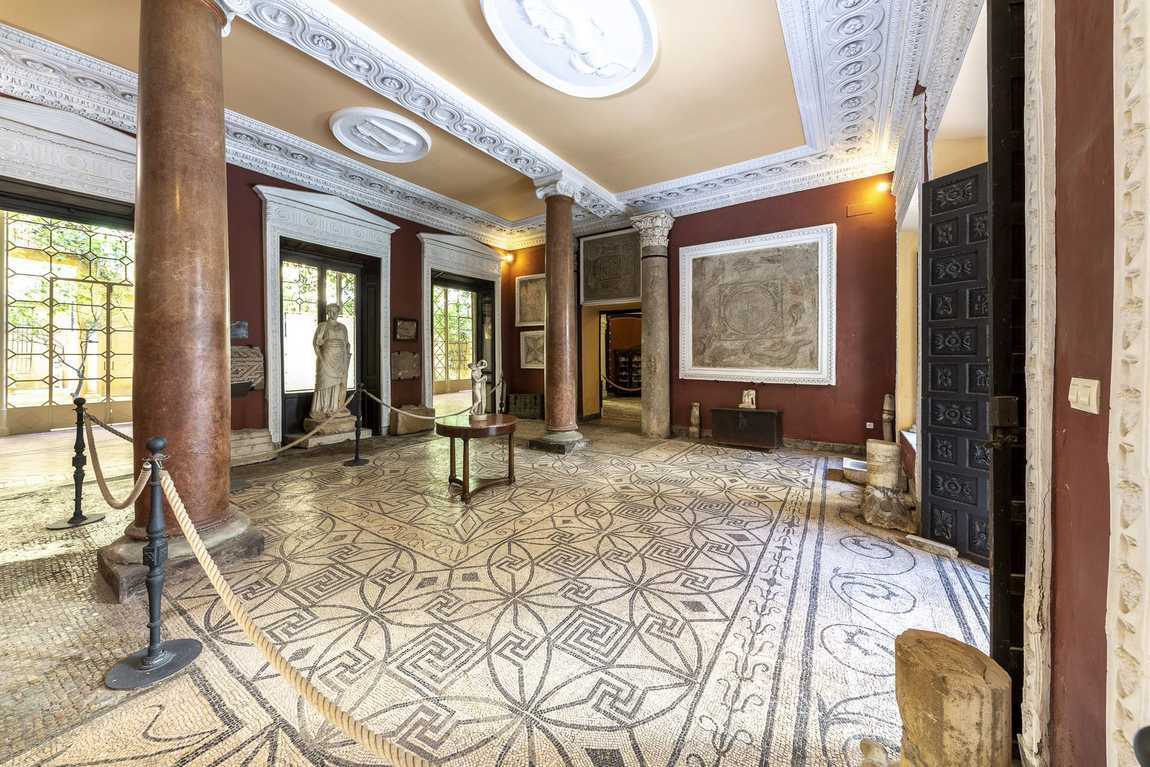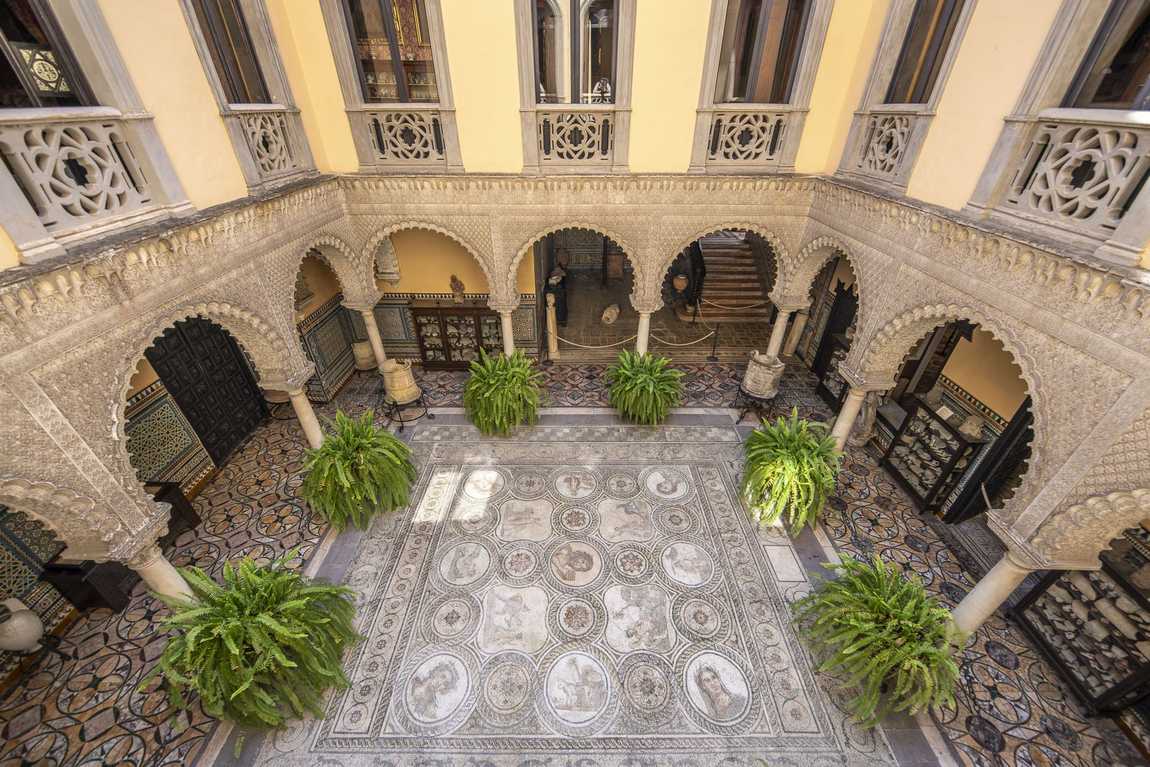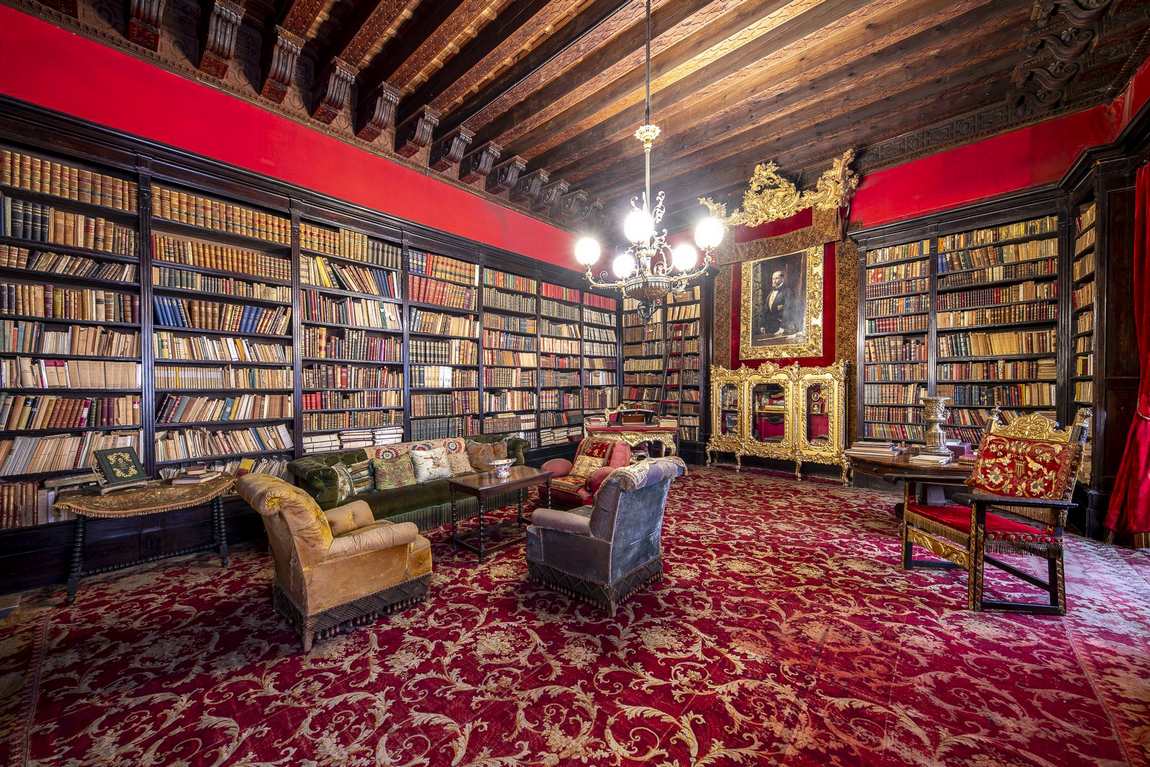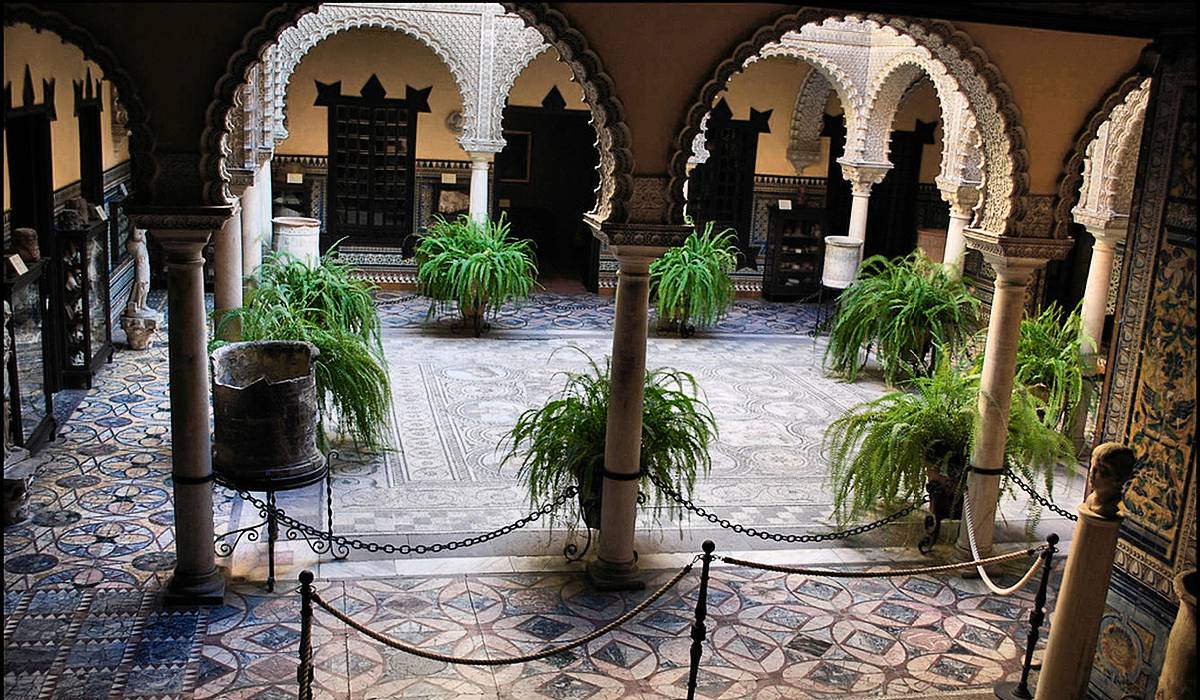Avid readers know that Arthur Pérez-Reverte's novel The Drum's Skin, or The Communion of Seville, takes place in the central city of Andalusia. The fictional characters are placed in realistic settings — for example, the palace of the Countess de Lebrija exists in reality, only they have a much more peaceful history. Why visit this palace if you're on holiday in Seville with a child? If only because not every archaeological museum offers such a rich collection of antiquities.

Palace of the Countess of Lebrija was built in the 16th century. At the beginning of the 20th century, Dona Regla Manjón Mergelina, Countess de Lebrija, undertook to refurbish the palace. It was not just a simple renovation of a dilapidated building but breathed new life into it by using elements of much older constructions in the decoration. Floor mosaics, beams and azulejos were discovered due to archaeological excavations in Seville's surroundings or in ancient buildings.
For example, a floor mosaic depicting Gorgon Medusa and the god Pan was transferred to the palace from excavations at the site of Roman Italica. The palace also received the ceiling panels from the ruined castle of the Ponce de León noble family (the carved portal from the castle is now a decoration of the Alcázar of Seville).

The palace has also become an exhibition hall, housing valuable archaeological finds from Ancient Greece and Rome. Ancient statues, although partially preserved, still have not lost their former beauty. The ceramic tableware is so harmoniously integrated into the palace interiors that all the amphorae and pithos seem to have been prepared for pouring freshly pressed oil or wine from the new harvest into them.

Of course, the architectural features of the palace itself are also noteworthy. The Andalusian Mudejar style, with its stone lacework and azulejos, is easily recognisable. All this splendour doesn't detract from the intimacy of the green courtyards.
The Palacio de Lebrija has been under restoration for some time. The repair was carried out so gently that it didn't look like a glossy new-fangled building but retained all its noble wrinkles — and old age certainly suits it.
If a tour of the palace puts you in a lyrical mood, visiting the nearby Flamenco Museum will help keep you in that mood.











